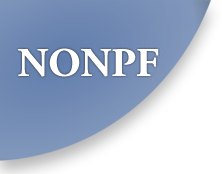Leverage Your Learning Management System with DNP Online Orientation
To fill this gap for beginning DNP students the full day, face to face, orientation session was redesigned to address student concerns5. Faculty from the DNP program in collaboration with an Instructional Designer embraced flipped classroom techniques to create an online orientation classroom to deliver course activities and assignments6. Furthermore, instructors utilized this vehicle to conduct reading comprehension, test-taking skills, and scholarly writing assessments in addition to the technology proficiency assessment. These assessments allowed faculty to identify “at risk” students prior to the beginning of classes and provide remediation services to insure student success7.
Leveraging our Learning Management System allowed a new cohort of DNP students to practice balancing learning activities with their work and family life prior to beginning classes, while faculty members were able to tailor coursework to meet student needs and program requirements. We will share how our innovative process allowed students to explore the online environment and practice using resources at their own pace before classes began. This innovation allowed faculty to identify “at risk” students before they struggled in class and provide additional assistance as needed. During the face to face, on campus orientation day, students and faculty could focus on building a community of learners through group activities and introductions to additional campus personnel which eased the frustration and isolation reportedly associated with online learning.

